What is Violence against Women, Domestic Abuse and Sexual Violence (VAWDASV)?
Violence against Women, Domestic Abuse and Sexual Violence (VAWDASV) refers to acts of violence or abuse that are disproportionately expressed toward women. However, we know anybody can be a victim of the types of violence, which include:
- Gender based violence (GBV) Intimate partner violence (IPV)
- Domestic violence and abuse (DVA)
- Sexual violence and abuse (SVA)
- Coercive control
- Forced marriage
- Child marriage
- So-called honour based abuse (HBA)
- Female genital mutilation (FGM)
- Human trafficking
- Sexual harassment
- Cyber harassment
- Adolescent dating violence (ADV).
VAWDASV can happen to anyone, anywhere but some women and girls are particularly vulnerable, for example, young women, women who identify as lesbian, bisexual, transgender or intersex, migrants and refugees, indigenous women and ethnic minorities, or women and girls living with HIV and disabilities and those living through humanitarian crises.
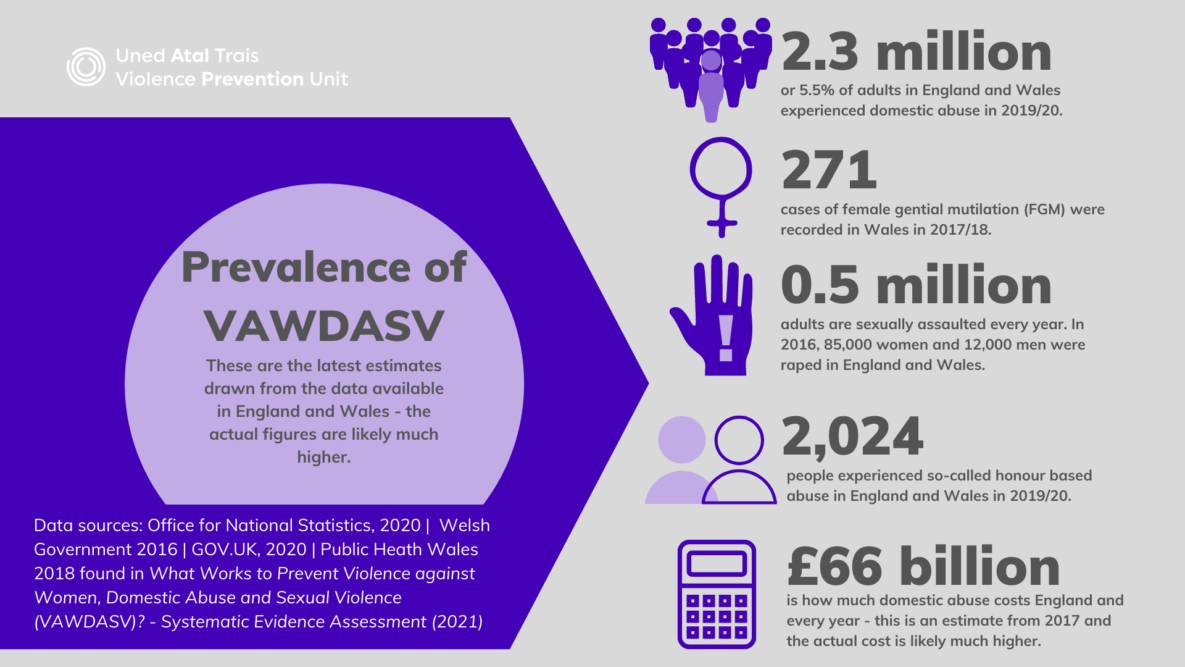
The impact of Violence against Women, Domestic Abuse and Sexual Violence
Violence against Women, Domestic Abuse and Sexual Violence (VAWDASV) is a major public health problem, a criminal justice issue, and a violation of human rights. It causes harm to individuals and families, and its impact can be felt across whole communities, societies and economies.
The true impact of VAWDASV cannot be adequately quantified. However, these types of violence can impact on victims in many ways. For example, sexual violence can lead to a multitude of health consequences including physical, reproductive and psychological harm. Female genital mutilation (FGM) can lead to both immediate health risks as well as a variety of long-term complications which can affect the person’s physical, mental and sexual health and well-being throughout their life.
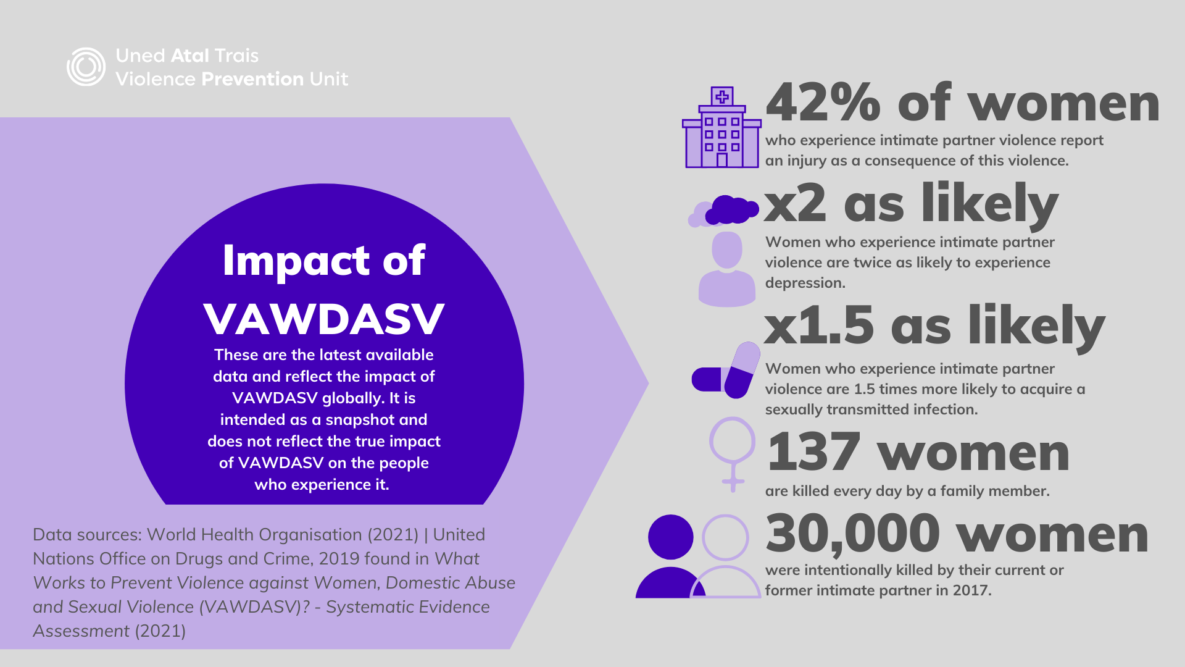
A Public Health Approach to Preventing Violence against Women, Domestic Abuse and Sexual Violence
The principles of public health provide a useful framework to investigate and understand the causes and consequences of VAWDASV and for preventing it from occurring.
The World Health Organisation’s Violence Prevention Alliance describes four steps to achieve a public health approach to violence prevention. These four steps of a public health approach have been used successfully to implement violence prevention activities across the globe:
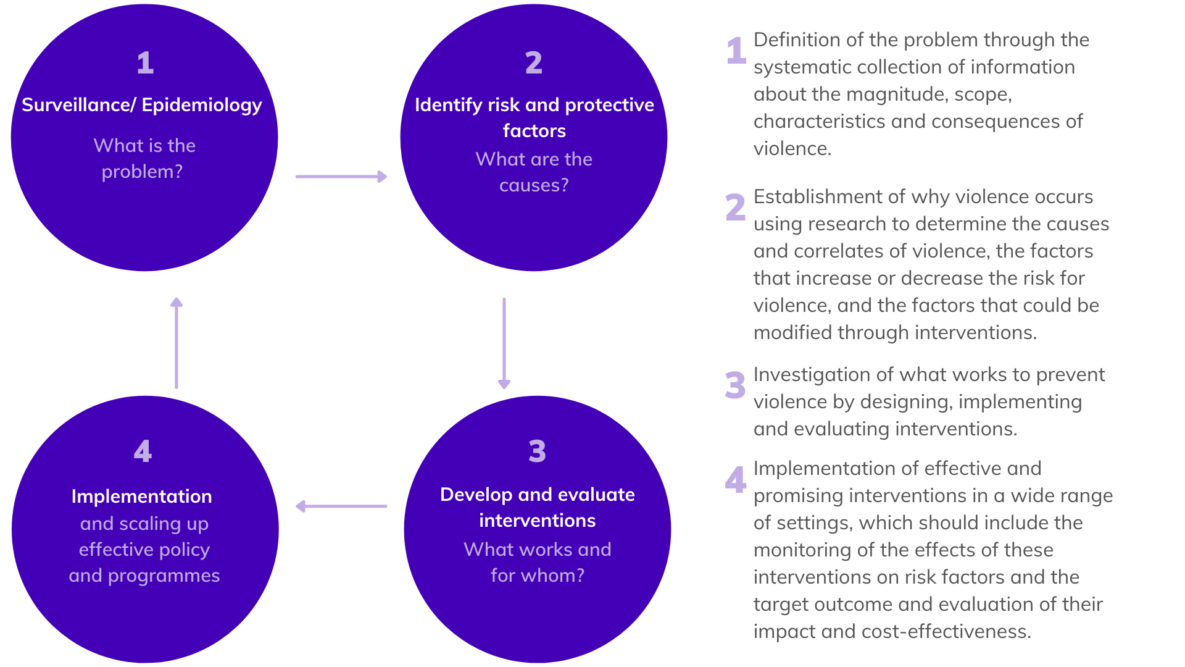
Public health prevention science identifies three tiers of intervention. A systematic, whole-society approach to the prevention of VAWDASV ensures that interventions are introduced across the spectrum of prevention.
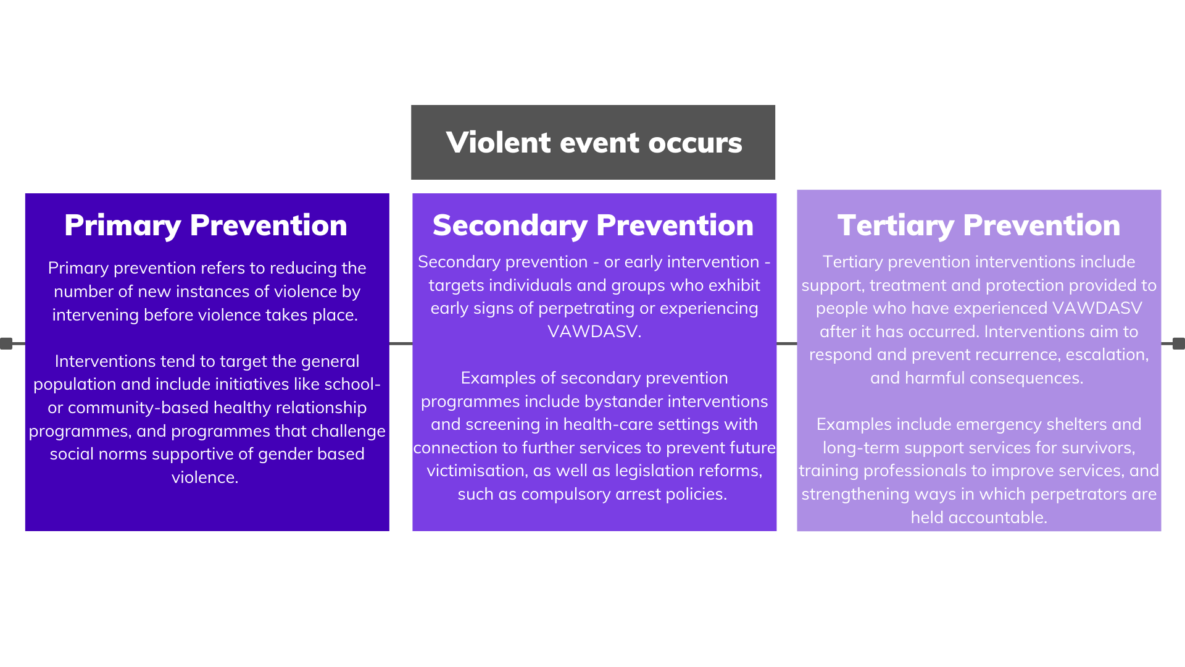
Preventing Violence against Women, Domestic Abuse and Sexual Violence in Wales
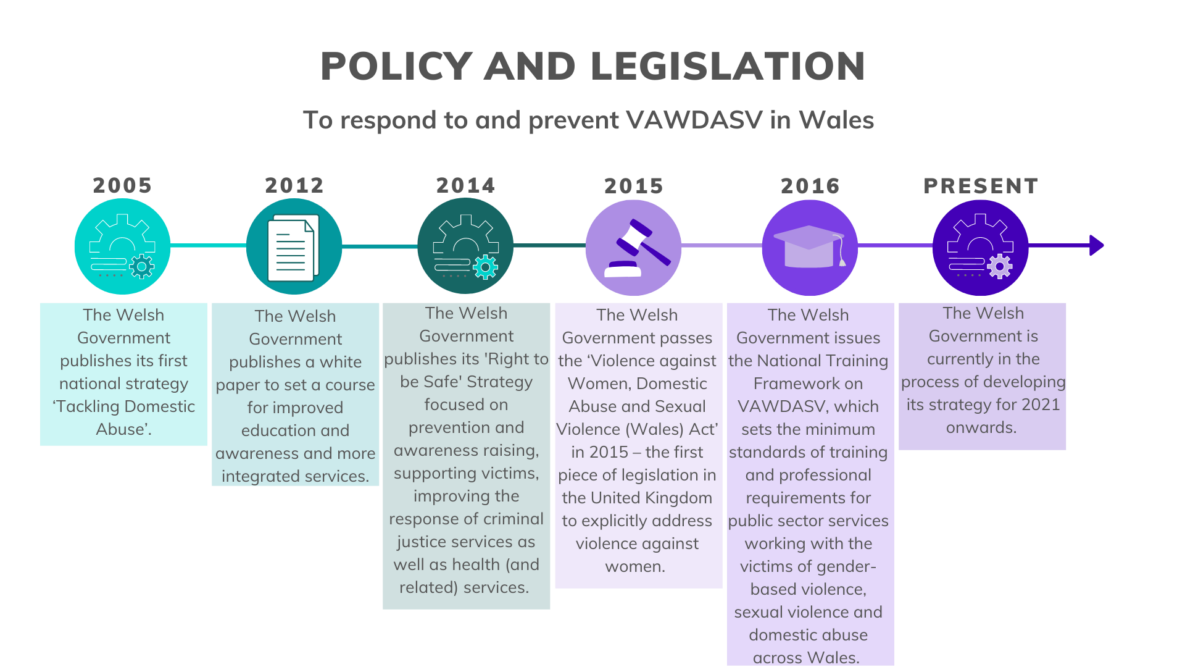
Wales Without Violence - A Shared Framework for Preventing Violence among Children and Young People PDF
By Wales Violence Prevention Unit and Peer Action Collective Cymru
